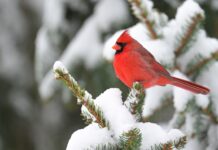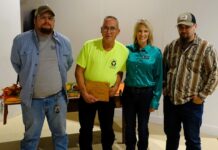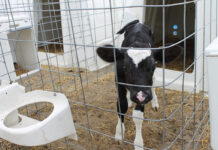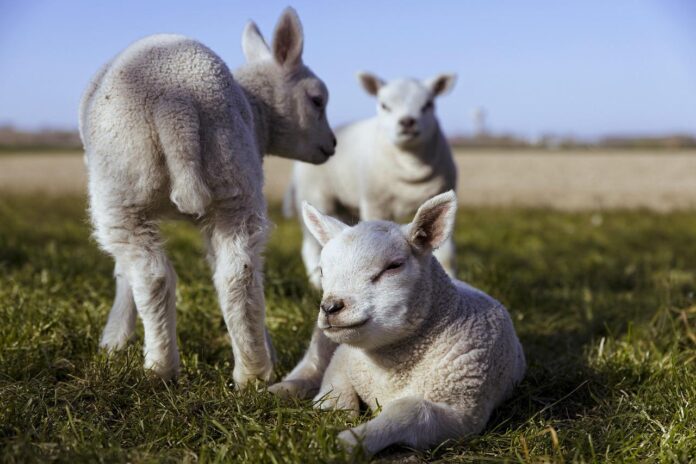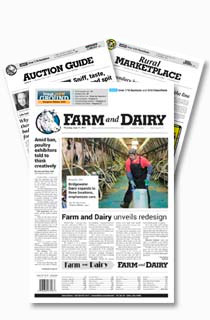When I put the ram in with the ewes last November, I calculated gestation, marked my calendar and planned for lambs in the middle of April. But, I recently discovered that Finnsheep, the breed newest to our flock, tend to have a shorter gestation.
Suddenly, I was moving my first lambing date up five days and scrambling to change travel plans to accommodate the new schedule.
The new date arrived, and so did babies, but unexpectedly, the first ewe to lamb was not a Finn but a sweet little girl of eclectic origins we call “Star Baby’s Baby’s Baby” — the great-granddaughter of one of my all-time favorite ewes. Star Baby’s Baby’s Baby had twin girls — one white with black spots, and one black with white spots. (We are tentatively calling them Dawn and Dusk, but as we’ve tried to name Star Baby’s progeny over the years and obviously those names never stuck, we will have to see what happens…)
The second round of babies arrived just a few hours later. This time it WAS one of the Finns, a stout sweetheart named Chai, and I got to be present for her labor and delivery. It was absolutely magical in every way, fully affirming how much I love being a shepherd and how thankful I am to be the caretaker of these wonderful creatures. However, gestation length is not the only unusual thing about Finns. They are also famous for having “litters” instead of the more common single or twins. Chai lived up to that reputation, and to my amazement, birthed four perfect brown and white spotted lambs with grace and ease.
The third ewe to lamb was not so graceful. Whereas Chai and her Finn sisters always seem to appreciate my presence, the other breed in my flock, Clun Forest, have made it clear in the past that they prefer privacy while birthing. So I wasn’t surprised when the first Clun appeared at dusk with a baby, already bouncing and running, belly full of milk, before I even realized she’d been in labor. The weather was warm and beautiful, and as the baby was doing great, and the mom clearly didn’t want me harassing her, I saw no reason to move them to the barn. I left the pair with the rest of the flock in the little pasture, thinking all was well.
Imagine my surprise the next morning when I went out to make my rounds and discovered this same ewe now being trailed by TWO lambs. After walking through the flock it was evident that no one else had lambed, and the surprise baby was in fact a twin, but judging by the mom’s total disdain for the poor chap, had decided she only wanted a single. Where he had been the night before remains a mystery, but I now had a bottle baby to raise.
A few days passed with no new lambs. I kept checking around the clock, surprised every time I went to the barn or walked around the pasture to find no one in labor, especially as the Finns in particular looked uncomfortably huge. I kept catching one or another of them lying alone with a faraway look in her eye–a sure sign of impending birth — but no babies.
Finally, yesterday, I went out to check and Emee, the Finn with the biggest belly, was in labor. Sure enough, less than an hour later, she too had four beautiful lambs. One of the babies was having trouble getting started so I bought him inside to warm up. By the time I made it back to the barn, a Clun had already had a set of twins, and another Finn had two babies on the ground as well. She was a first-time lamber, and her belly was half the size Emee’s had been so I assumed she was done.
Wrong!
So, here we are, the day I originally thought I would start lambing and I already have 16 lambs out of five ewes. Phew! All I can say is that I am having so much fun, and gosh I need a nap!



